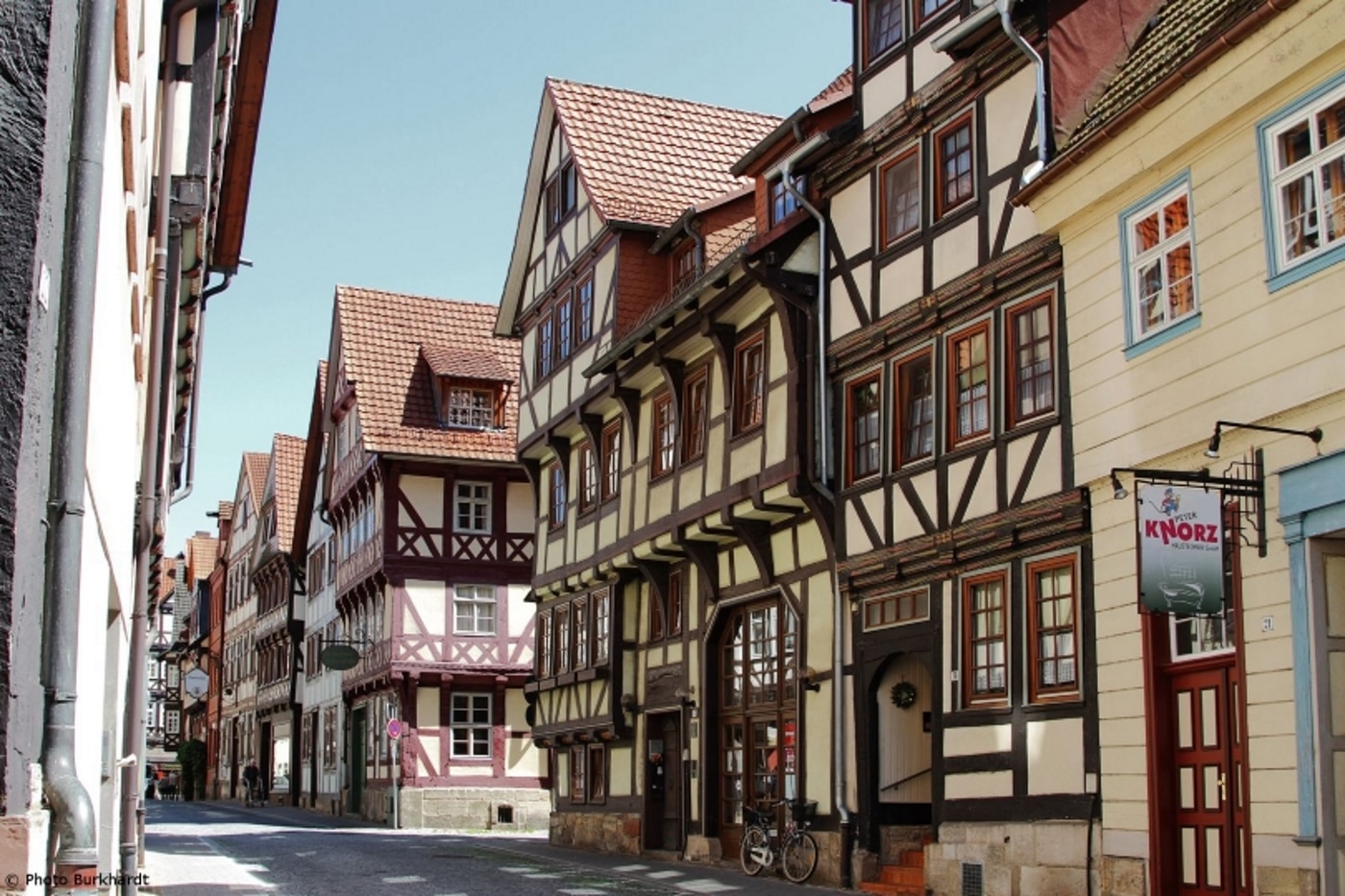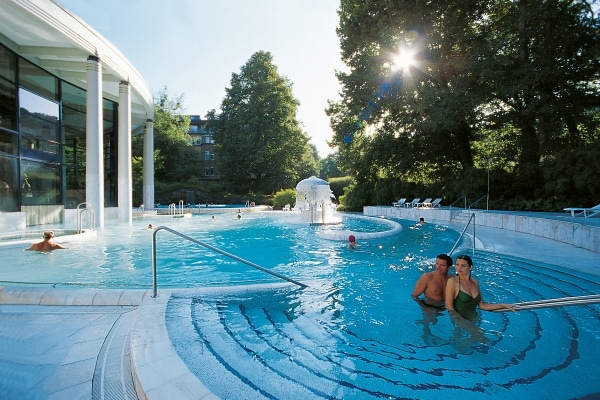Standing in Germany’s Black Forest surrounded by dense canopies of dark towering evergreens, I fully expected to see Little Red Riding Hood skipping along to Grandma’s house with the big bad wolf undoubtedly lurking somewhere behind a tree. This geographically blessed region in southwest Germany’s state of Baden-Württemberg was the inspiration for many of those beloved childhood fairytales. But it’s not all dark sinister forests, there are vast expanses of valleys, waterfalls, rolling hills, gently rising mountains, and rivers teeming with trout. Quaint towns and villages with half-timbered houses are scattered throughout the region and posh resort spa towns with pools of thermal mineral waters are just a short drive away in the foothills of the Black Forest. The birthplace of the iconic cuckoo clock, red pompom hats, and the Black Forest cake, this region is rich in German traditions and customs. Come explore the Black Forest with us and we’ll keep an eye out for that big bad wolf.
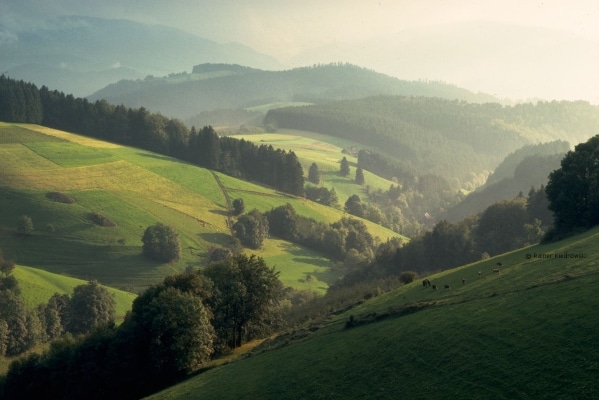
Travel through Time at Vogtsbaurernhof
A perfect place to begin an exploration of German traditions and customs is Freilichtmuseum Vogtsbaurernhof, the Black Forest open air museum, in the village of Gutach. The museum chronicles 400 years of Black Forest history through an extensive collection of cultural assets. Situated on 12 scenic acres, Black Forest farm houses built from the 16th to 19th centuries reflect the typical architecture from their areas of origin. Furnishings, tools, and traditional costumes inside the farm houses reveal the religious preferences, work, and personalities of the families who lived there. Smoky smells etched into the walls emanate from the black kitchens which are still used for traditional cooking demonstrations. Outbuildings formerly used as storehouses, mills, saw-mills and hemp presses maintain their original character and at the Falkenhoff farmstead even the animals in the stalls are old breeds of cattle and pigs.
On the grounds of the museum area craftsmen demonstrate traditional crafts . Depending on the day you can meet a spinner, weaver, wood-carver, straw-shoemaker or Hans Heinzmann, the broom-maker. The craft of broom making began with the chimney sweepers. If you have a chimney to sweep, you need a broom and the best way to get the perfect broom is to make it from the twigs you find in the forest. Broom-making skills have been passed down through generations.
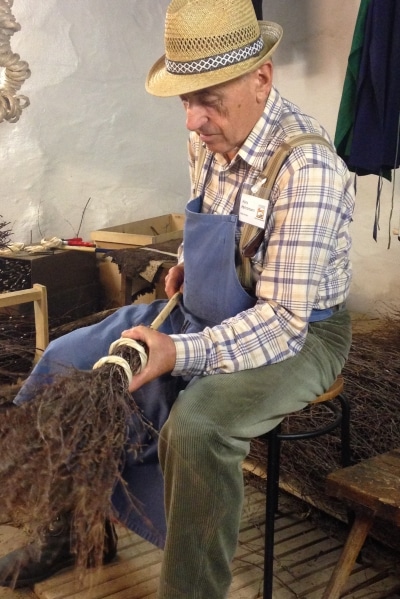
Mr. Heinzmann learned his craft as a child and still heads into the forest to hand pick the twigs for his demonstrations. Dressed in green corduroys, plaid shirt, and a straw hat he effortlessly assembles the brooms of varying sizes in minutes. Upon seeing all the brooms one observant little guy asked, “Does a witch live here?”
If you have ever seen photos of young ladies from the Black Forest, you may have noticed their large hats covered in red pompoms – the bollenhut. Gutach is the home of the bollenhut and also where one of the last remaining bollenhut makers continues her craft. The traditional hat and the original Black Forest costumes are still worn today by the young ladies in the village for cultural events, weddings and religious holidays. The red pompoms are reserved for the single ladies. The married women wear hats with black pompoms. On weekends the young ladies can been seen strolling around the museum.
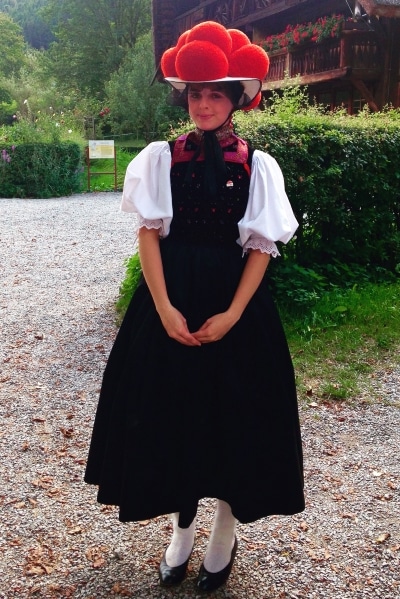
Explore the Craft of Glassblowing
For centuries glassblowing was one of the most important crafts of the Black Forest. The region’s natural resources and raw materials – beech wood for potash, quartz sand which was mixed with potash and spruce and fir wood for the melting process – were abundant, leading to the settlement of many glassworks factories. In the charming village of Wolfach, the Dorotheenhütte is still using centuries old techniques of mouth-blown and hand cut glassmaking. Guided tours are available and you can even try your hand (or mouth) at blowing your own vase. The onsite Dorotheenhütte Glass Museum exhibits 2000 years of glassmaking history with a collection chronicling various development stages, styles of past eras, and the growth of glass artistry. The gift shop filled with delicate hand blown and painted Christmas ornaments is guaranteed to lure you in for a bit of shopping.
Cuckoo for Cuckoo Clocks
One of Germany’s most iconic crafts is the hand-carved cuckoo clock. No one is certain when the first cuckoo clock was made in the Black Forest, but since the beginning of the 19th century Brothers Andreas and Christian Herr have been making cuckoo clocks in a farmhouse near the village of Triberg. Like other craftsmen, they passed their skills on to each succeeding generation. Today the Hubert Herr cuckoo clock factory is managed by the fifth generation.
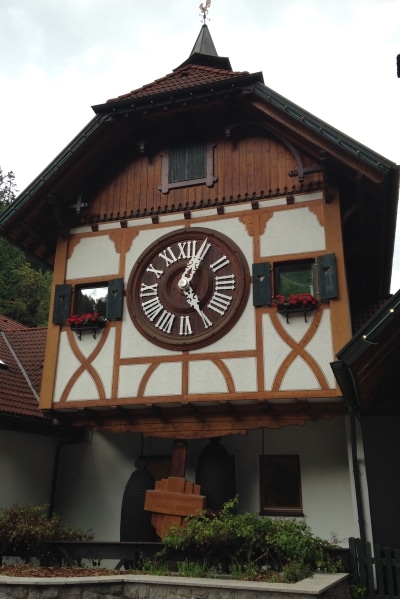
Along the picturesque German Clock Route through the Black Forest every clock has a story. Visits to factories, workshops and sign painters’ studios provide insight into the daily lives of clockmakers. There are numerous types of clocks manufactured here including trumpeter clocks, flute clocks, watchclocks, sundials, and pendulum clocks. You can trace the history of German clock-making and the cuckoo clock at the German Clock Museum in Furtwangen. Whatever you do, don’t miss the world’s largest cuckoo clock in Triberg (near Schönberg), which made it into the Guinness Book of Records at more than 15 meters high.
Bathing Traditions in Baden-Baden
Germany has a long history of wellness pursuits with nearly 900 spa resorts including mineral and mud spas, climatic health resorts, seaside resorts, and hydrotherapy spa resorts. One of the best places to experience the spa culture is in the posh resort town of Baden-Baden. Located in the foothills of the Black Forest, Baden-Baden is known for its elegant hotels, sophisticated lifestyle, health spas, and mineral-thermal baths. Stretching back to the 18th century, the bathing traditions in Baden-Baden are driven by natural thermal streams that surface from 6,500 feet deep. When the mineral springs cured Emperor Caracalla’s rheumatism, he built three baths here – one for himself, one for his soldiers, and one for his horses.
Opened in 1877, the Friedrichsbad spa was dubbed a “temple of wellbeing” and was considered the most modern bathing establishment in Europe at the time. The lavishly decorated Neoclassical structure has hosted numerous Roman emperors, soldiers recovering from injuries, and even Mark Twain who once said, “Here at the Friedrichsbad you lose track of time within 10 minutes and track of the world within 20.”
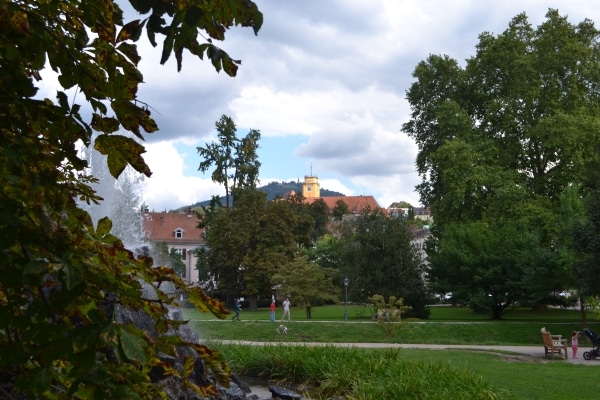
Friedrichsbad’s Roman-Irish bathing experience is comprised of 17 stations varying from a sequence of warm and hot dry air baths, a soap and brush massage, steam baths, thermal showers, and thermal pools. You should be aware, the Friedrichsbad is traditionally nude so all of your clothes will have to come off for this experience. Maybe that is why Mark Twain lost track of the world. I mustered up the courage to spend the afternoon in the buff on co-ed bathing day, which was a completely new experience for me and one I would highly recommend. But, if you can’t bring yourself to shed your clothes there is another option. Named for Emperor Caracalla, the Caracella Spa offers a rock grotto with hot and cold water pools, a relaxing aroma steam bath, and a brine inhalation room. There are also outdoor marble pools, a water currant channel, and two whirlpools – and you can leave your swimsuit on.
Germany and Cars
As the birthplace of the automobile and the home of major automobile manufacturers including Porsche, Volkswagen, BMW, Audi and Mercedes Benz, cars are a German tradition. At the end of the 19th century, Karl Benz introduced the first German car, Motorwagen. And that first car produced more than a century ago continues to be a trendsetter for the country’s auto industry. Innovation drives Germany’s car manufacturing industry with every car model offering something new to showcase. As the fourth largest producer of cars in the world, Germany cranks out six million cars within the country and another 5.5 million abroad.
There are several museums in the country with dedicated auto galleries and one of the most impressive is the Mercedes Benz Museum in Stuttgart. The museum chronicles the 125 years history of the auto industry in a single continuous timeline. The sleek contemporary building has nine levels and covers a floor space of 16,500 square meters. The building’s interior is inspired by the double helix structure of the DNA spiral that carries the human genome – an illustration of the Mercedes-Benz brand philosophy to continuously create products to advance the cause of human mobility.
While I appreciate automobiles, I don’t typically spend time in auto museums, but this place was incredible. Elevators reminiscent of something from Star Trek beamed me up to the top level of the museum and back to the year 1886. From there, I gradually spiraled my way downward through the extensive collection of over 1,500 exhibits and 160 vehicles including the Pope-mobile. The museum intricately weaves the story of the automobile within the historical events of each decade. Even the music playing in each section matches the time period – so you know you’ll be hearing some disco in the 1970s section of the museum!
[alert type=white]
Where to Stay:
Black Forest
Hotel Gasthous zum Hirsch
Guest houses are popular lodging in the Black Forest with breakfast and dinner included with accommodations. The Hotel Gasthouse zum Hirsch in Gutach has a lovely deck for dining with views of the surrounding forest.
Hirschgasse 2; 77793 Gutach , Schwarzwaldbahn; Phone: +49 (0) 7831 228; www.hirsch-gutach.de
Baden-Baden
Hotel Magnetberg
Scheibenstraße 18; 76530 Baden-Baden; Phone: + 49 (0) 7221/3640; www.hotel-magnetberg.de
V8 Hotel
Extend your automobile themed visit to Stuttgart with an overnight stay just outside the city in Böblingen at the V8 Hotel with car-themed rooms, car memorabilia and car inspired beds. Be sure to check out the car wash room where the shower comes with an air dryer for your body – no towel required.
Graf-Zeppelin-Platz 1; 71034 Böblingen; Phone:+49 7031 3069880
What to See & Do:
Freilichtmuseum Vogtsbaurernhof
Vogtsbaurernhof 1; 77793 Gutach, Schwarzwaldbahn; Phone: +49(0)7831 93560
Dorotheenhuette Wolfach Betriebs GmbH
Glashüttenweg 4; 77709 Wolfach; Phone: +49 (0) 7834 83980; Email: info@dorotheenhuette.de
Hubert Herr
Hauptstr. 8; 78098 Triberg/Schwarzwald; Phone: +49 (0) 7722 4268; Email: info@HubertHerr.de
German Clock Museum
Robert-Gerwig-Platz 1; 78120 Furtwangen im Schwarzwald; Phone: +49 (0) 7723 920280
Friedrichsbad
Römerplatz 1; 76530 Baden-Baden; Phone: + 49 (0) 7221 275940
Caracalla Spa
Römerplatz 1; 76530 Baden-Baden; Phone: + 49 7221 275940
Mercedes-Benz Museum
Mercedesstraße 100; 70372 Stuttgart, Germany; Phone: +49 711 1730000
[/alert]

